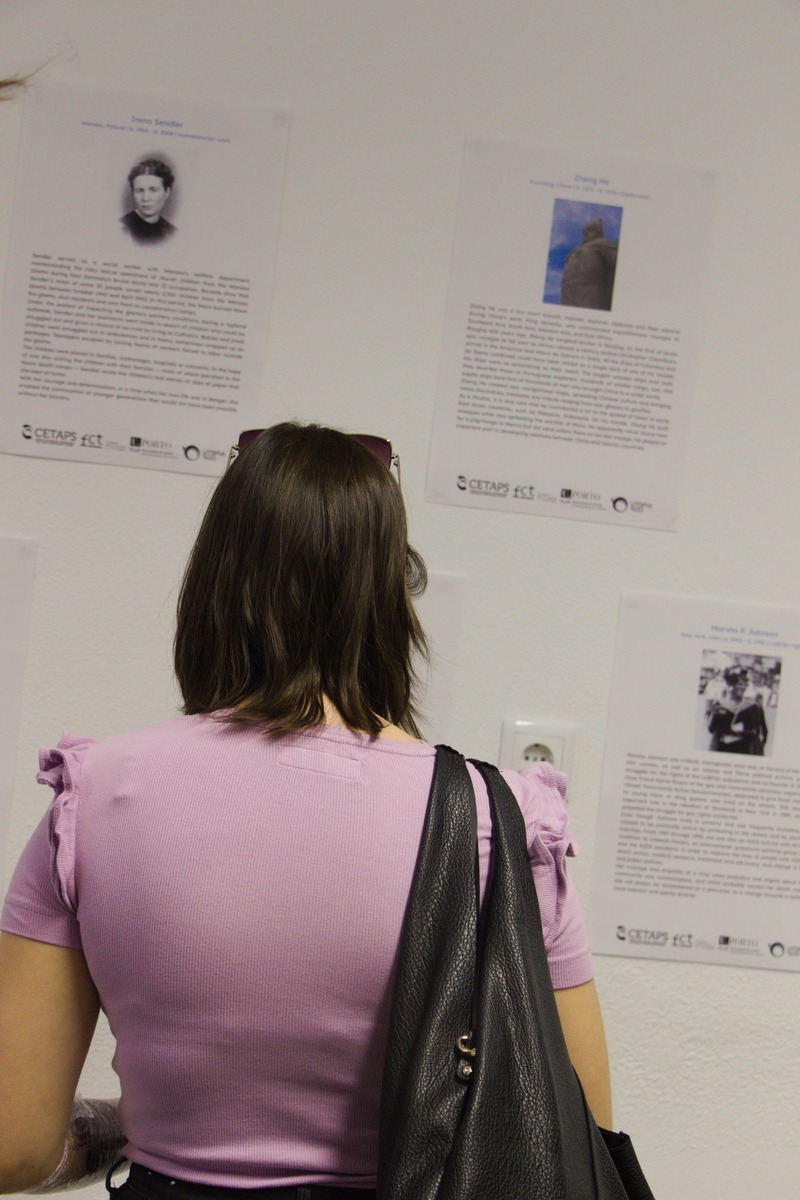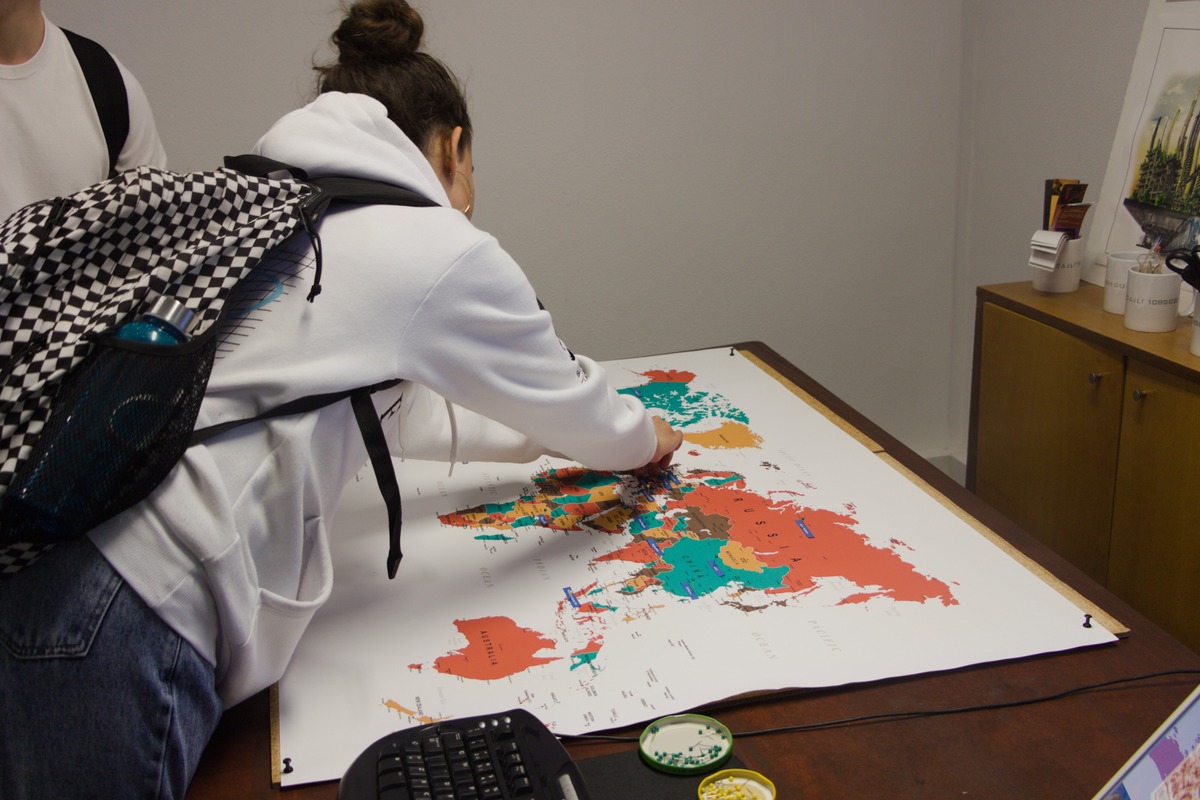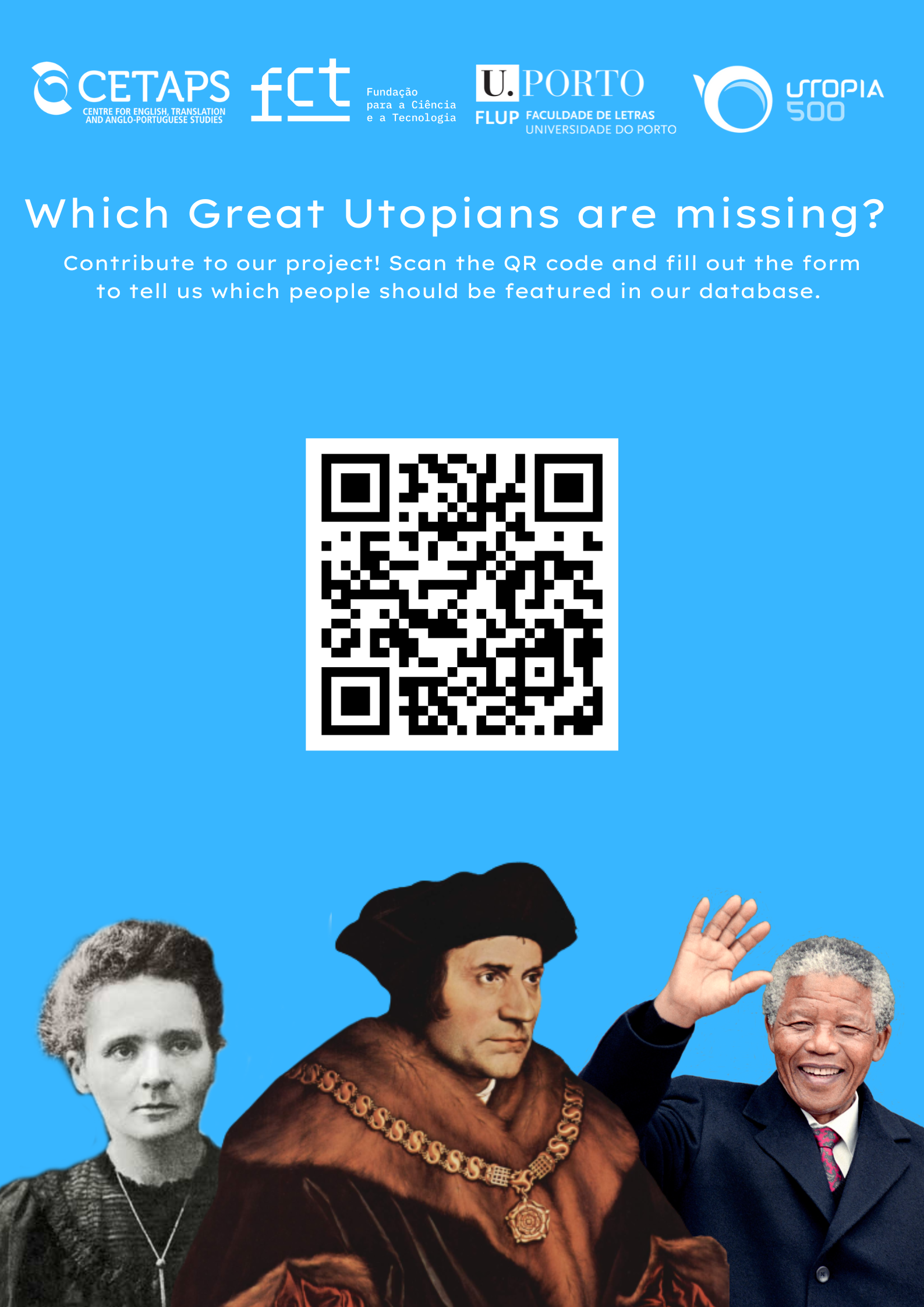For this year's CETAPS Digital Lab Open Day, I created an activity based on the 'Great Utopians' subproject of the Utopia 500 CETAPS project. The exhibition was mostly based on the interactive map and biography collection that have been created for 'Great Utopians', which gather a total of 77 people who, by their revolutionary contributions to the betterment of humanity, have been deemed to be great utopians, with names such as Marie Curie, Vasco da Gama and Abraham Lincoln.
The exhibition had three different dimensions to it.
Firstly, eight posters, containing the biographies of some of the great utopians on our list, were used to create a short exhibition where visitors could read about utopians that wouldn't be as well known as some others: these include Father Himalaya, Marsha P. Johnson, Ana Aslan, among others.

Secondly, a small collaborative activity was created based on the Utopia 500 interactive map. A large world map was placed on a table, and visitors were asked to place labels with the names of some of our utopians on the map, while they had access to a computer through which they could visit the Great Utopians biography list so they could find where these utopians had been born. Labels would be placed on the map with differently colored pins: green, if the visitor thought the figure was, undoubtedly, a utopian; red, if they did not; yellow, if they were not sure.

The overall goal of this task was to show a significant problem that arose when I was working on the database: that there is an issue of underrepresentation of those utopians who are not European or North American. As the map became filled with labels, this issue would become readily apparent, as Europe and North America would be covered in names, and the rest of the map would be largely empty.
Lastly, visitors were invited to participate in the Great Utopians project themselves, as it is, by design, open to contributions. A small poster with a QR code was created, giving visitor's access to a form in which they could present a historical figure who they thought could be categorized as a 'Great Utopian'.

The activity seemed to be a success, as various visitors were immediately drawn to the great world map and the possibility of participating in an activity which, by the end of the day, would take the shape of a grand collaborative project.
My work on the 'Great Utopians' database continues, and we should soon create a new, more complete interactive map for display on the Utopia 500 website.
